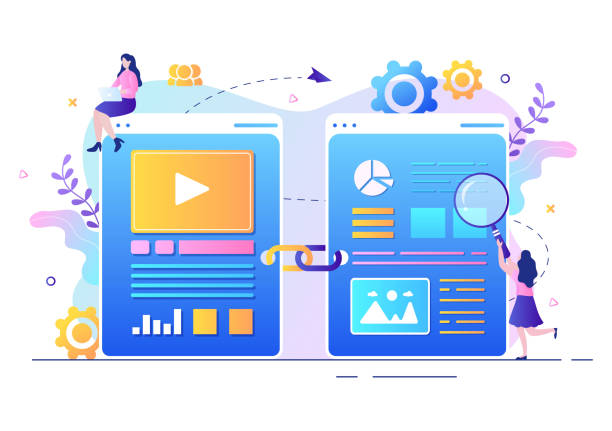The Importance of Globalization and the First Step in Multilingual Website Design

In today’s world, where geographical boundaries have blurred thanks to the internet, #GlobalReach is vital for every business.
Imagine your website being available in only one language; this means losing a huge portion of the #International_Market and potential customers.
Multilingual website design is no longer a luxury option but a strategic necessity for companies seeking growth and expansion.
This approach opens new doors to customers, partners, and business opportunities worldwide.
But why should we consider globalization for our website? Do our target audiences only search in their native language? The answers to these questions lead us to a deeper understanding of the need for building a multilingual website.
This doesn’t just mean literal content translation, but also involves understanding cultures, regional differences, and user search behavior in various languages.
The primary goal at this stage is to identify target markets and their main languages.
This precise analysis will be the foundation for a successful and effective multilingual website design.
Indeed, every step taken in this direction must aim to increase accessibility and improve the user experience for international audiences.
How much does losing business leads due to an unprofessional website cost you? Solve this problem forever with a professional corporate website design by Rasawweb!
✅ Increase credibility and trust among potential customers
✅ Easier attraction of new business leads
⚡ Get a free consultation right now!
Challenges and Opportunities in Multilingual Website Design
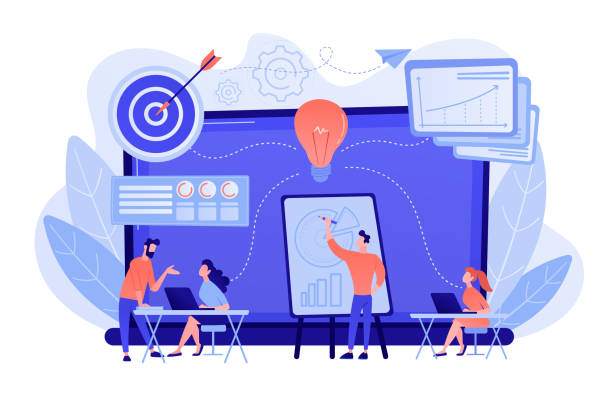
Implementing a multilingual website design undoubtedly comes with numerous challenges.
One of the most important is ensuring the accuracy and quality of translations; machine translation is often insufficient and can lead to misunderstandings and even damage to brand reputation.
Another challenge is the technical management of the website and URL structure for different languages, which impacts SEO and site discoverability.
From a technical perspective, attention must also be paid to compatibility with various browsers and different devices.
However, alongside these challenges, countless opportunities lie hidden.
Multilingual website design allows you to enter new markets and significantly increase your market share.
By providing content in users’ native languages, you will build their trust and loyalty, leading to higher conversion rates.
This approach also greatly assists your digital marketing at an international level and strengthens your online presence.
Therefore, with careful planning and the use of appropriate solutions, challenges can be transformed into opportunities for business growth and expansion.
This is an investment that yields significant returns.
Architecture and Technical Structure for Supporting Multiple Languages
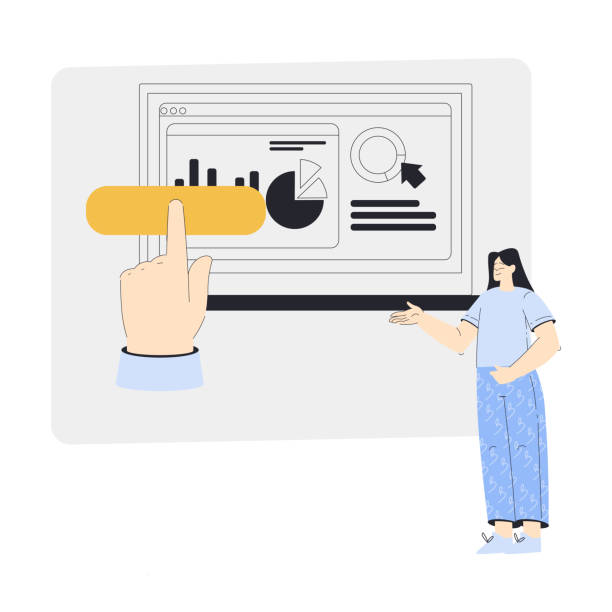
One of the most crucial aspects in multilingual website design is choosing the appropriate architecture and technical structure for managing different languages.
There are three main methods for organizing URLs, each with its own advantages and disadvantages: subdomains, subdirectories, and country code top-level domains (ccTLDs).
Subdomains (e.g., en.example.com) are treated as separate websites in terms of SEO and are relatively simple to manage, but may require separate SEO efforts.
Subdirectories (e.g., example.com/en/) are the most common method and benefit from the main domain’s authority, which is more favorable for SEO.
ccTLDs (e.g., example.de) are ideal for precise geographical targeting but are more expensive and complex to manage.
The correct choice of this structure impacts not only SEO but also user experience and website maintenance ease.
In addition to URL structure, designing a database that can efficiently store and retrieve multilingual content is of paramount importance.
| Structure Type | Example | Advantages | Disadvantages |
|---|---|---|---|
| Subdirectory | example.com/en/ | Main domain SEO authority, easy management | Limitation in precise geographical targeting |
| Subdomain | en.example.com | Better content separation, better geographical targeting | Needs separate SEO, may be seen as a separate site |
| Country Code Top-Level Domain (ccTLD) | example.de | Best for geographical targeting | More expensive, more complex management, needs separate domain |
Content and Translation Management in a Multilingual Website Design Project

After selecting the technical structure, the next critical step in multilingual website design is content management and the translation process.
Mere literal translation is not enough; the content must align with the culture and linguistic nuances of the target audience.
This is where the importance of localization goes beyond simple translation.
Localization includes adapting currency, date and time formats, images, and even the tone of writing to the target region.
To efficiently manage this process, using a Content Management System (CMS) that supports multilingual capabilities is essential.
Platforms like WordPress with suitable plugins, or Drupal and Joomla that have better native multilingual support, can assist you in this area.
Furthermore, planning for a systematic translation workflow, including translation, review, editing, and publishing stages, is crucial for maintaining content quality and consistency across all languages.
This process must ensure that all updates and changes in the original language are quickly and accurately applied to other languages as well.
Without a strong content management strategy, the multilingual website building project will quickly fall into disarray and decline in quality.
Are you tired of your company’s website failing to meet your expectations? With Rasawweb, design a professional website that truly represents your business.
✅ Increase attraction of new customers and sales leads
✅ Enhance your brand’s credibility and trust among your audience
⚡ Get a free website design consultation now!
Multilingual SEO and Search Engine Optimization Strategies

For your multilingual website design to be well-identified by search engines in different countries, implementing multilingual SEO strategies is absolutely essential.
The most important tool in this regard is the use of hreflang tags.
These tags inform search engines like Google which version of a page is intended for which language or geographical region.
This helps prevent duplicate content issues and directs users to the correct language version.
Keyword research in each language and region, is another crucial step.
Keywords that are effective in one language may not be applicable or may have a different meaning in another language.
Therefore, keyword research must be done separately for each target market and language.
Also, paying attention to metadata, titles, descriptions, and URLs in the language of each page, is a basic principle of multilingual SEO.
Internal and external linking, considering the relevant languages and regions, also greatly contributes to your site’s credibility and ranking.
All these measures help search engines better understand your site’s multilingual structure and display it to the appropriate users, which results in increased international website traffic and visibility.
A multilingual website design without strong SEO will lose its full potential.
User Experience (UX) on Multilingual Websites
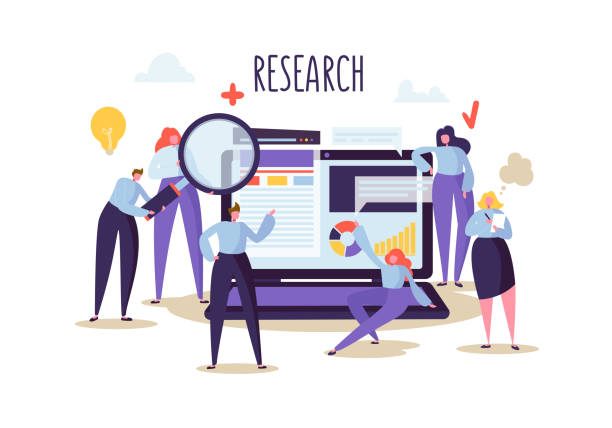
Beyond translation and SEO, User Experience (UX) plays a key role in the success of multilingual website design.
A poor user experience can render even the best translated content ineffective.
International users expect to easily select their preferred language.
Therefore, placing the language switcher in an accessible and prominent location (usually in the header or footer) is very important.
Also, universal symbols for displaying languages (such as flags or language codes) should be used, and the full language name (e.g., “English” instead of “USA”) should be utilized, as a specific flag might be sensitive for different nationalities speaking a common language.
Furthermore, the design must be flexible enough to handle differences in word and phrase lengths across languages; for example, a German word might be much longer than its English equivalent, and this can disrupt page layouts.
Attention to reading direction (right-to-left for Persian and Arabic, left-to-right for most other languages), date and time formats, currency, and even colors and images that have different meanings in various cultures, are other important points in multilingual UX design.
A successful multilingual website design not only translates content but localizes the entire experience to feel natural and usable for every user, regardless of their language or location.
Modern Tools and Technologies in Multilingual Website Implementation
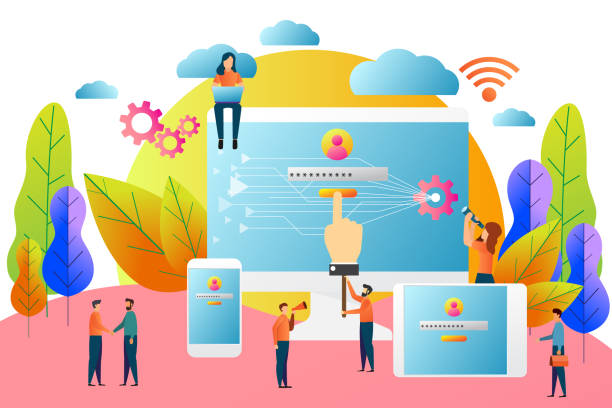
Implementing a multilingual website design requires leveraging appropriate tools and technologies.
Choosing the right CMS is the first important step.
WordPress, with plugins like WPML or Polylang, enables building a multilingual website.
Drupal and Joomla also natively support strong multilingual capabilities and are more suitable for larger and more complex projects.
In addition to CMS, Translation Management Systems (TMS) streamline the translation and localization process and ensure quality.
These tools can help you manage Translation Memory and glossaries, leading to consistency in translations and reduced costs in the long run.
The use of Artificial Intelligence (AI) in translation is also advancing and can help speed up initial translation, although human review remains necessary for accuracy and localization.
These technologies collectively simplify the international site implementation process and increase efficiency.
| Tool Type | Examples | Primary Use |
|---|---|---|
| Content Management System (CMS) | WordPress (with plugins), Drupal, Joomla | Building and managing the core website structure and content |
| WordPress Multilingual Plugins | WPML, Polylang, TranslatePress | Adding multilingual capabilities to WordPress |
| Translation Management Systems (TMS) | Smartcat, MemoQ, Trados | Managing the translation process, translation memory, and glossaries |
| Machine Translation (MT) Tools | Google Translate API, DeepL | Initial automatic translation to speed up work |
Maintenance and Updates for Multilingual Websites

Multilingual website design is not a one-time project; rather, it is a long-term commitment.
Continuous maintenance and updates are crucial for maintaining the site’s correct functionality, security, and attractiveness for international users.
This process involves several aspects.
Firstly, as content in the original language is updated, it must be ensured that all translated versions are also quickly and accurately updated.
This requires an efficient and organized translation workflow.
Secondly, the CMS platform and multilingual plugins must be regularly updated to prevent security issues, bugs, and incompatibilities.
Thirdly, monitoring website performance in different languages, including loading speed and responsiveness, is very important.
Specific issues may arise for a particular language or geographical region that require immediate attention.
Cybersecurity is also an important aspect; multilingual sites may be more attractive targets for cyberattacks, so implementing strong security measures to protect user data worldwide is essential.
Finally, with the emergence of new languages and markets, your multilingual website design must have the capability to expand and add new languages to keep pace with your business growth.
Is your company’s website as professional and trustworthy as it should be? With specialized corporate website design by Rasawweb, create an online presence that reflects your credibility and attracts more customers.
✅ Create a powerful and professional brand image for your business
✅ Convert visitors into real customers
⚡ Get a free consultation right now!
Measuring Success and Data Analysis on International Websites

After international site implementation, measuring success and analyzing data is crucial for understanding its performance in different markets.
Tools like Google Analytics can provide deep insights into user behavior for each language version.
By correctly configuring reports, you can analyze incoming traffic, bounce rates, time spent on site, user paths, and conversion rates based on language and geographical region.
These analyses help you understand which languages or regions are performing better and which areas need optimization.
For example, you might discover that users of a specific language are facing issues on a particular page, or their conversion rate is lower than expected.
These insights can lead to data-driven decisions to improve content, User Experience, or SEO strategy for that specific language.
A/B tests in each language version can also be useful for optimizing various elements such as titles, calls-to-action (CTAs), or page layouts.
By closely monitoring data and making smart changes, the performance of your multilingual website design can be continuously improved, maximizing Return on Investment (ROI).
This analytical approach ensures the long-term success of your site.
Conclusion and the Future of Multilingual Website Design

Ultimately, multilingual website design is more than a technical feature; it’s a comprehensive strategy for expanding your business globally.
This approach allows you to connect with more audiences, build their trust, and compete in new markets.
From choosing the right architecture and meticulous translation management to SEO optimization and attention to localized user experience, each step plays a crucial role in ultimate success.
With technological advancements, the future of multilingual website design will become even more exciting.
Artificial intelligence and machine learning will play a more prominent role in translation and localization, making processes faster and more efficient.
Furthermore, with increasing internet access worldwide, the need for multilingual communications will only grow.
So, now is the time to seriously consider investing in multilingual website design.
This is an essential step for any business that wants to have a global presence in the digital age and benefit from its countless opportunities.
With proper planning and correct execution, your website can be a bridge to international success.
Frequently Asked Questions
| Question | Answer |
|---|---|
| What is a multilingual website? | A website whose content is available to users in more than one language. |
| Why should I make my site multilingual? | To access more audiences in global markets, improve user experience, and enhance international SEO. |
| What are the technical approaches to building a multilingual site? | Using subdirectories, subdomains, or URL parameters to differentiate languages. |
| How does multilingual design affect SEO? | By targeting local keywords and providing content in users’ native languages, the site’s ranking in search engines for those regions improves. |
| What are the challenges of multilingual website design? | Content translation management, supporting Right-to-Left (RTL) orientation, technical issues related to language addressing, and maintaining design consistency. |
| How do we choose the languages for a multilingual site? | Based on target audience analysis, desired markets, and current site traffic data (if available). |
| What is RTL support and why is it important for some languages? | Right-to-Left, is the display orientation of text and page elements from right to left, which is essential for languages such as Persian, Arabic, and Hebrew. |
| How to manage multilingual website content? | Using Content Management Systems (CMS) with multilingual capabilities, translation plugins, or professional translation services. |
| What is User Experience (UX) like on a multilingual site? | The ability to easily switch languages should be available, and the translated content should be of high quality so that users feel comfortable. |
| What are the common CMS platforms for multilingual sites? | WordPress (with plugins like WPML), Joomla, Drupal, and Shopify (with relevant settings or plugins). |
And other advertising services of Rasawweb Advertising Agency
Smart UI/UX: Designed for businesses seeking digital branding through key page optimization.
Smart Sales Automation: A fast and efficient solution for analyzing customer behavior with a focus on precise audience targeting.
Smart Marketing Automation: Revolutionize customer acquisition by optimizing key pages.
Smart Social Media: Professional optimization for customer attraction using engaging user interface design.
Smart Link Building: Professional optimization for increasing website traffic using intelligent data analysis.
And over hundreds of other services in the field of internet advertising, advertising consultation, and organizational solutions
Internet Advertising | Advertising Strategy | Advertorials
Sources
Multilingual Website DesignExpanding Global ReachThe Importance of Web LocalizationMultilingual SEO
? To make your business shine in the digital world and achieve its lofty goals, Rasawweb Afarin Digital Marketing Agency is by your side with its expertise and experience. By providing comprehensive digital marketing solutions, including modern UI website design, SEO, online advertising, and social media management, we pave your path to growth.
📍 Tehran, Mirdamad St., next to Central Bank, Kazeroon Jonubi Alley, Ramin Alley No. 6




